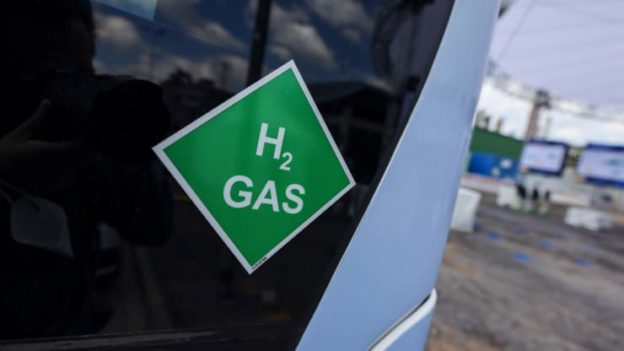- Hydrogen has a diverse range of applications and can be deployed in a wide range of industries.
- Siemens Energy and Air Liquide have announced plans to focus on the production of “industrial scale renewable hydrogen electrolyzers in Europe.”
- A growing number of multinational firms are attempting to lay down a marker in the green hydrogen sector.
Siemens Energy and Air Liquide have announced plans to set up a joint venture focused on the production of “industrial scale renewable hydrogen electrolyzers in Europe.”
The move, announced on Thursday, represents the latest attempt to find a way to drive “renewable” or “green” hydrogen production costs down and make the sector competitive.
The establishment of the joint venture — Siemens Energy will have a 74.9% stake, while Air Liquide will hold 25.1% — is subject to approval from authorities.
If all goes to plan, its headquarters will be in Berlin, with a facility producing electrolysis modules, or stacks, also based there.
Plans for electrolyzer production in the German capital had been previously announced. Manufacturing is set to begin in 2023, with a yearly production capacity of 3 gigawatts reached in 2025.
The European Union’s executive arm, the European Commission, has previously said it wants 40 GW of renewable hydrogen electrolyzers to be installed in the EU in 2030.
In Feb. 2021, Siemens Energy and Air Liquide announced plans related to the development of “a large scale electrolyzer partnership.”
Siemens Energy shares, year-to-date
Chart
Described by the International Energy Agency as a “versatile energy carrier,” hydrogen has a diverse range of applications and can be deployed in a wide range of industries.
It can be produced in a number of ways. One method includes using electrolysis, with an electric current splitting water into oxygen and hydrogen.
If the electricity used in this process comes from a renewable source such as wind or solar then some call it “green” or “renewable” hydrogen. Today, the vast majority of hydrogen generation is based on fossil fuels.
In Oct. 2021, Siemens Energy CEO Christian Bruch spoke of the challenges facing the green hydrogen sector. On Thursday, he stressed the importance of scale and collaboration going forward.
“To make green hydrogen competitive, we need serially produced, low-cost, scalable electrolyzers,” Bruch said in a statement. “We also need strong partnerships,” Bruch added.
Air Liquide CEO François Jackow described the creation of the joint venture as “major step towards the emergence of a leading European renewable and low-carbon hydrogen ecosystem.”
Siemens Energy and Air Liquide’s plan for a joint venture represents the latest attempt by multinational firms to lay down a marker in the green hydrogen sector.
Just last week, oil and gas supermajor BP said it had agreed to take a 40.5% equity stake in the Asian Renewable Energy Hub, a vast project planned for Australia.
In a statement, BP said it would become the operator of the development, adding that it had “the potential to be one of the largest renewables and green hydrogen hubs in the world.”
In Dec. 2021, Iberdrola and H2 Green Steel said they would partner and develop a 2.3 billion euro (around $2.42 billion) project centered around a green hydrogen facility with an electrolysis capacity of 1 gigawatt.
https://www.cnbc.com/2022/06/24/the-race-to-make-green-hydrogen-competitive-is-on.html?__source=sharebar%7Ctwitter&par=sharebar&action=profile_completion&





